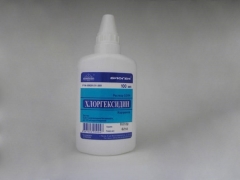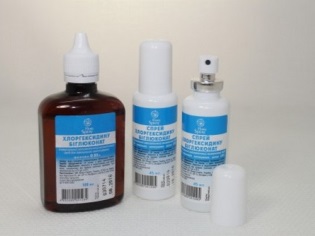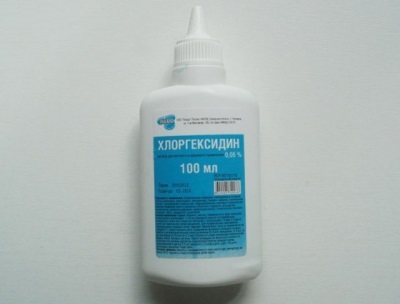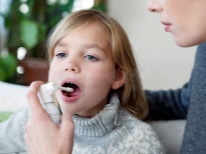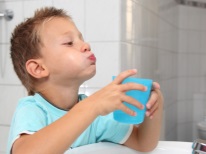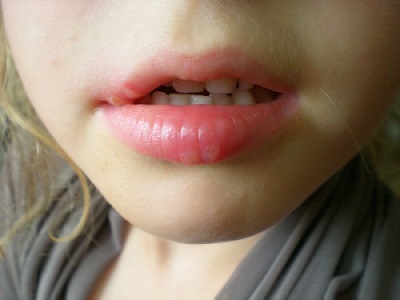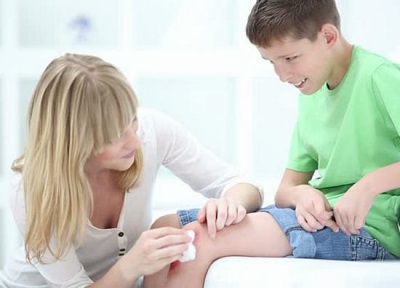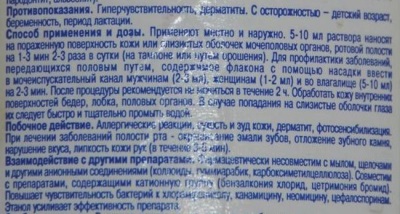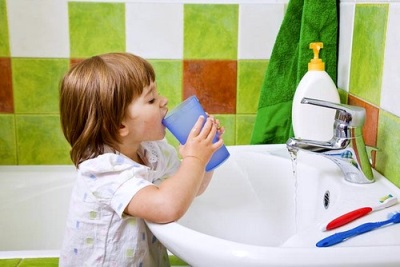Is it possible to give chlorhexidine to children?
Chlorhexidine is one of the fairly common antiseptic and antibacterial agents often used in dentistry, surgery and ENT practice. But, when it is prescribed to treat a child, parents are always interested in whether it is possible to give such a drug to children, how and when chlorhexidine is used in children, and whether this remedy can be dangerous for children.
Act
The active ingredient of this drug is chlorhexidine digluconate, which has such an effect on the child's body:
- Antiseptic.
- Antibacterial.
- Pain reliever
- Anti-inflammatory.
After treatment of the affected area, chlorhexidine leaves a thin film on it, which for a long time has a disinfecting effect.
Release form
Pharmacies sell chlorhexidine in the form:
- An aqueous solution with a concentration of 0.05%, 0.2%, 1%, 5% and 20%.
- Alcohol based solution with a concentration of 0.5%.
- Spray with alcohol solution with a concentration of 0.5%.
- Candles used in gynecological diseases.
In childhood use only aqueous solutions of this drug. For any manipulations, it is allowed to use a solution with a concentration of 0.05%, and if the concentration of the acquired solution is greater, it should be diluted with boiled water (cooled) or distilled water.
When used in childhood
Sore throat and nose
In the practice of ENT doctors, chlorhexidine is quite in demand. The drug is used for pain and inflammation in the throat, including purulent lesions. It is effective for sore throat, laryngitis, tonsillitis and pharyngitis.
The medicine is prescribed to children for such procedures:
- Gargling. Especially often such a procedure is prescribed when a child develops a sore throat. Chlorhexidine gets on the infected areas and affects them, despite the presence of pus, so this drug is effective in case of purulent tonsillitis.
- Irrigation of the throat. To do this, the child’s head is tilted face-down over the sink, chlorhexidine is collected in a syringe or a syringe without a needle, then irrigate the neck for thirty seconds to put the medicine on the mucous membrane, and then pour it into the sink.
- Rinsing the nose. Chlorhexidine helps to quickly cure certain types of cold and is safe for the nose, but at home it is rarely used for washing. Parents prefer to resort to more proven means - physical saline and miramtina.
- Inhalation. The drug is added to the nebulizer for procedures for inflammation of the upper respiratory tract.
Dental diseases
Chlorhexidine is prescribed for children who have developed stomatitis (especially aphthous), since the drug reduces swelling and helps to relieve the inflammatory process in the oral cavity. Also, rinsing and irrigation can be prescribed by a dentist for gum disease (periodontal, gingivitis) and for treating the oral cavity after teeth are removed.
Outdoor use
Due to antiseptic and antibacterial effects, chlorhexidine has long been shown to be effective for skin and mucous lesions:
- With the use of chlorhexidine, the treatment of wounds on the child's skin (abrasions, cuts, burns) is carried out in order to reduce or prevent their inflammation and infection by bacteria.
- The drug is often prescribed for washing the earlobes after piercing.
- With diaper rash in babies, this drug is not prescribed because of the age limit of its use.
Contraindications and side effects
Chlorhexidine prescriptions are avoided when:
- Intolerance to the components of the drug.
- Otitis (contact of chlorhexidine and the eardrum should not be allowed to prevent the substance from reaching the auditory nerve).
- Dermatitis.
- Eye disease (flushing the eyes is permissible only with a special form of chlorhexidine, which is designed specifically for this manipulation).
Prolonged use of chlorhexidine to treat the throat or mouth can cause:
- Headaches.
- The appearance of unpleasant taste.
- Trouble sleeping
- Darkening of the enamel of the teeth.
- Dry mouth.
The drug should not be combined with soap. If you mix up the concentration of the drug and apply a more concentrated or undiluted solution in your child, it threatens with a burning sensation and a local allergic reaction. In rare cases, the use of chlorhexidine in any concentration causes an immediate allergic reaction in the child.
How to gargle: instructions for use
- Take chlorhexidine solution, the concentration of which is 0.05%, then dissolve 1 to 1 or 1 to 2 with warm water. If a child is older than 12 years old, dilution of the solution is not performed.
- Since the diluted or open medication loses its properties in 30-40 minutes, prepare a portion of the solution for one procedure immediately before the procedure.
- First, several times the child must rinse the neck with just warm water.
- Then he should take in the mouth a prepared solution of chlorhexidine in the amount of one tablespoon and gargle for about 30-60 seconds.
- For angina, this rinse is performed twice in a row.
- After processing, do not eat or drink anything for 1-2 hours.
- Rinsing is performed 2-3 times a day, and in case of severe sore throat - up to 4 times.
- Duration of use should not exceed 7 days.
What to do if the child drank Chlorhexidine
Any child can accidentally swallow the drug during rinsing, so parents should be aware of what to do in such a situation before manipulation:
- Clear the stomach, giving the baby plenty of water and causing the child to vomit.
- Give activated carbon to a son or daughter at the rate of 1 tablet per 10 kg of child's weight.
